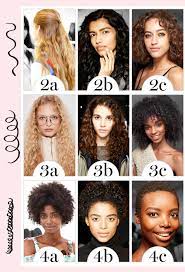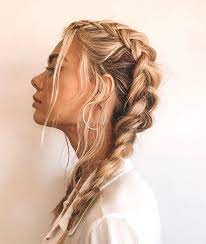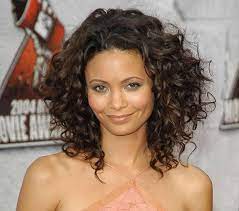
Wavy hair sits between straight and curly textures, featuring waves or coils of various widths or depths. Your wavy texture may exhibit loose beachy waves or more defined S-curls; your classification could be 2A, 2B, or 2C, depending on its characteristics.
2A
2A hair types feature light S-shaped waves with a slight emphasis, creating loose S-shapes at their roots before becoming more defined as they move through their length. It appears almost straight at first but gradually gets more limited down its length. The slight bend in this wavy hair type makes it easier for natural scalp oils to travel down strands, increasing its susceptibility to oiliness more quickly than other wavy styles. Therefore, lightweight styling products must be utilized to not weigh your locks down and strip their oils from them. Maintaining a moisturized scalp by applying a deep conditioner at least once every week and sitting under a hooded dryer will amplify its beneficial properties. Regular trims will also prevent your strands from becoming dry or damaged; though this might seem like an unnecessary extra step in your hair-care routine, they could make all the difference for healthy, strong locks!
2B
Wavy hair textures lie somewhere in between straight and curly. Wavy textures range from loose loops to S-shaped waves; more defined S shapes, higher density, and texturization may all contribute to its textured appearance. Furthermore, due to its high porosity level, wavy textures are more susceptible to frizz due to moisture entering easily, but product build-up leaves quickly, too! Considering this, you must find products to combat frizz and build-up in your hair. Try ‘plopping’ your damp locks overnight by loosely wrapping them with a cotton T-shirt or microfiber towel before sleeping on them, which helps protect curls from frizz while giving effortless styles in the morning. Use volumizing serums to add more definition and bounce while being wary not to overuse hairspray, gels, or other hold products as they may weigh them down and create crunchy looks.
2C
2C waves can be identified by tightly wound ‘S-shaped coils that begin at your roots and finish near your scalp. 2C waves tend to be thicker and may exhibit more frizz, making extra hydration essential; seek sulfate-free shampoos, conditioners, and anti-frizz serum for best results. Walking the line between wavy and curly can feel like a tightrope; advice tailored for curly locks doesn’t quite fit, while tips for wavy hair only sometimes provide enough hold or definition. To control wild waves, choose light styling products that enhance and define natural curl patterns and textures for optimal results. Once your 2C locks have been cleansed and towel dried, apply a curl-enhancing or defining product and work it in with a wide-tooth comb, air drying or diffusing them as usual. For added volume in your style, consider adding volumizing mousse.
3A
Looser and larger coils than other curly types define 3a hair. It features defined, s-shaped spirals that appear bouncy and buoyant. When wet, these coils might look wavy; when dry, they form tighter locks that resemble corkscrews. Combination hair is sometimes known as two-tone curls and should be carefully monitored for signs of breakage due to being more susceptible than other curl types. As frizz may occur more readily with 2b or 3c curls, humidity-blocking products like Orlando Pita Well Behaved Anti-Frizz Cream Serum should also be utilized; the winner of GH Beauty Lab’s anti-frizz styling product test is particularly helpful here. One of the most incredible things about 3a hair is its low maintenance needs compared to other curly types. Still, it is wise to use sulfate-free shampoo every few days, avoid cotton towels when drying it, and apply heat protectant before styling hot tools.

